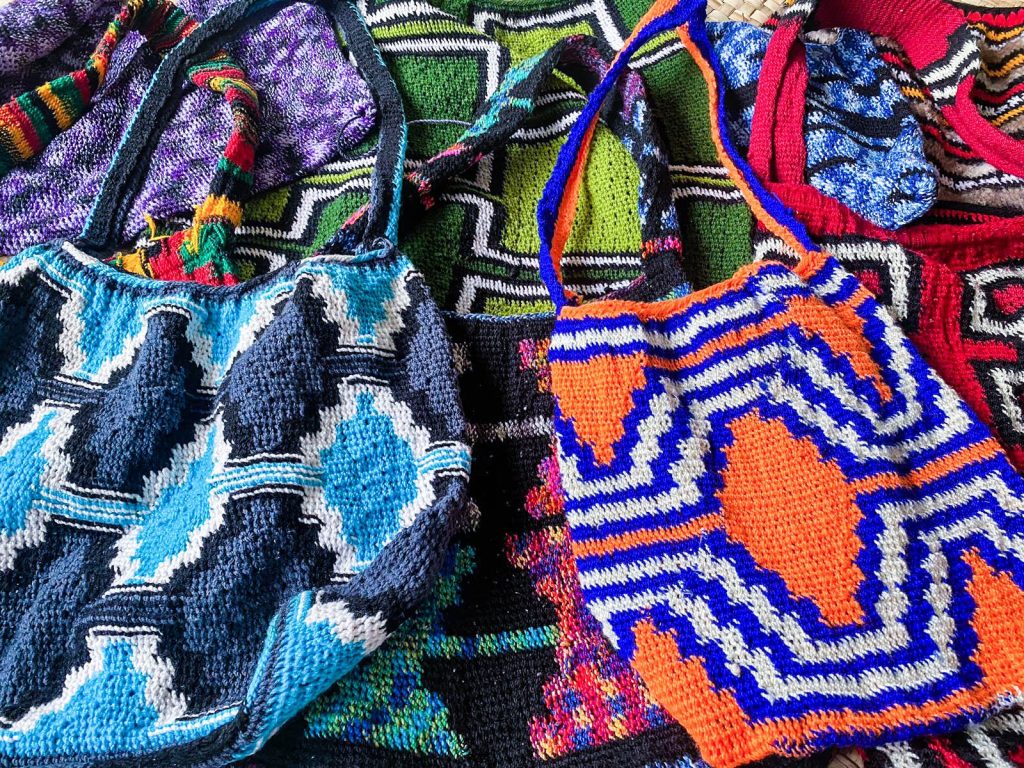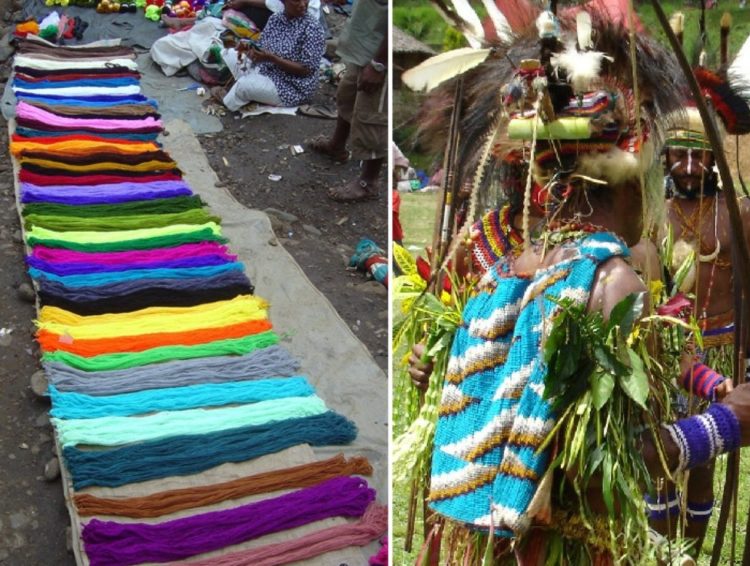Introduction: A Tapestry of Cultures
Papua New Guinea, an enchanting archipelago nestled in the South Pacific, is home to approximately 9.95 million inhabitants and boasts over a thousand tribes, with a rich mosaic of more than 800 languages. Amidst this vibrant cultural panorama, there exists a common thread— the bilum bag, a traditional handwoven satchel that holds profound significance for the women of the nation.
A Colorful Presence
Wandering through the bustling streets, serene rural paths, and crowded marketplaces of Papua New Guinea, one cannot help but notice the omnipresence of bilum bags. Women of all ages, pursuing various professions and responsibilities, carry these colorful creations, whether slung over their shoulders or held in hand. In rural areas, these bags can span up to a meter wide, robust enough to carry dozens of kilograms, while their urban counterparts are often smaller and more elegantly crafted, serving as stylish accessories or practical carriers for daily essentials.
A Journey Through Time
The history of the bilum bag traces back to the prehistoric era of Papua New Guinea. Early inhabitants, who relied on hunting and gathering amidst a nomadic lifestyle, ingeniously utilized local plants to create ropes for collecting food, giving rise to what we now know as the bilum bag. Local legends speak of a time when the sun was hidden away in the dark caves of local sorcerers—a bilum bag became the vessel of light, a symbol of abundance and universality, as it “once held the sun,” embodying the idea that it can hold anything.

From Practicality to Symbolism
Initially, bilum bags were practical tools for storing sweet potatoes, fruits, and arrows for tribal warriors. Over time, they evolved into cherished cultural gifts, presented during significant occasions such as birthdays, weddings, and coming-of-age ceremonies, often accompanied by traditional dances and heartfelt blessings. Today, they symbolize the spirit of hospitality and friendship for Papua New Guinea, as foreign dignitaries are often presented with exquisitely crafted bilum bags as tokens of goodwill.
Nurturing the Next Generation
An extraordinary aspect of the bilum bag is its role in childcare. These bags are not only carriers but double as cradles for infants, offering a secure and flexible space where babies can be suspended safely, often draped with mosquito nets or surrounded by herbs to deter insects. The bags, typically hung 0.5 to 1 meter above the ground, allow mothers to keep a watchful eye on their children while engaging in daily activities.
Empowerment Through Craftsmanship
Traditionally woven by women, the craftsmanship of bilum bags has been passed down through generations, forming a vital cultural heritage. From the age of five, local girls learn the art of weaving from their mothers during agricultural downtime. The meticulous process—from gathering plant materials to pulling fibers, spinning, dyeing, and ultimately weaving—can take weeks or even months to complete. For many women, especially in remote areas with limited economic opportunities, bilum weaving has become a means of financial support, enhancing their roles within both family structures and tribal communities.
Distinctive Patterns and Meanings
Each tribe and family creates bilum bags with unique characteristics. The materials used include a variety of plant fibers and animal furs, while natural dyes in shades of black, white, yellow, and red bring these bags to life. The visual complexity of bilum bags mirrors the intricate patterns of a Scottish tartan, where each design tells a story. Women often have personal bags adorned with an array of symbols—from simple lines and squares to letters, words, and motifs such as birds of paradise and national flags. Each design carries specific meanings; for instance, diamond patterns may symbolize a girl’s transition to adulthood, while gun imagery serves as a reminder of the violent past.
Cultural Significance and Modern Impact
Notably, initiatives like the Chinese-supported dry rice project have had a significant impact on local livelihoods, with experts dedicating years to earning the trust of the Papua New Guineans. This partnership has now found representation in bilum art, with rice sheaf motifs appearing on the bags, symbolizing hope and progress towards sustainable living.
In conclusion, the bilum bag stands as more than just a mere accessory; it is a symbol of identity, strength, and resilience woven into the fabric of Papua New Guinea’s cultural heritage. Celebrating its beauty and utility not only cherishes the past but also embraces the future.





















